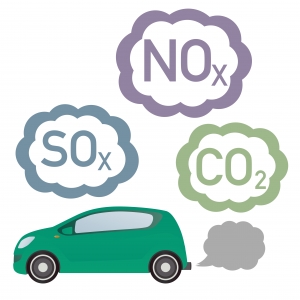2015

When Greed is Not Green
Murray McEwan / 0 Comments /My last blog focused on fear – the fear that rumbles when markets grumble – this blog shines the spotlight on greed. Fear and greed – the emotions I was taught to look out for in my early days as a financial adviser. The received wisdom was that people would buy investment products or insurance because they were afraid or greedy. Why would that be? How does greed work?
We may well have a case study unfolding right in front of us. On 28 July 2015 VW announced that their sales of motor vehicles had overtaken Toyota to make them the global leader. Two months later a third had been wiped off their share price (that means £manybillions) and the chief executive has not only resigned but is facing police questioning.
What on earth drives any executive of such a star performer to bend the rules and travel on the dark side? Why take such a risk with such an outstanding reputation? One possible answer is greed.
Greed: when I go green looking at someone else’s grass, when I am tempted by what I don’t need but do desire – greed takes over. My situation may be fine, it may even be brilliant, but if it could just possibly be better … greed drives me to chase something newer, shinier, rarer. Something that may give me an edge over another.
Our FM portfolios are so dull that sometimes I do sympathise with clients who ask whether or not they should try something different! We can go for months without making changes whilst alert investors may notice that a particular investment has recently had a good run or they may have read a compelling article on why we should all invest in Forestry or Gold or Exchange Traded Futures or, most popularly, Buy-to-Let housing. A client may ring and say, “David, would it be a good time to invest in Soybean Oil futures?”
So I look at my client’s goals and objectives. I look at their humdrum portfolio. And I note (with some satisfaction) that the package we have put together with them has a really high likelihood of delivering the returns they need to achieve their goals at a risk level they can tolerate. And I ask myself, “Why Soybean Oil? In fact, what is Soybean Oil?” Nobody knows what a Soybean Oil futures contract is but somehow it has managed to stimulate a little germ of greed in my client’s soul!
There’s a remarkable piece of wisdom in the Bible which addresses this, “Those who want to get rich fall into a temptation and a trap and into many foolish and harmful desires that plunge people into ruin and destruction” (1 Timothy 6:9).
There’s nothing wrong with being rich – the problem is the urge to get richer. What I mean is the willingness to take extra risk chasing an annual return of 10% when a return of 6% may be plenty to get what we need. So my response to my highly-valued client is, “Why?”.
When thinking about placing your money in a different asset class because you think that it may do better than your existing investments you should ask some hard questions. Here are some examples we come across regularly:
| Asset class | Questions | Issues |
| Gold & other commodities | How to actually invest? How much will it cost in fees, insurance and storage? Will you miss the loss of income? How will you know when to sell? How do you sell? | No income.
Loss of liquidity. Timing. |
| Buy-to-let | Do you want to be a landlord?
Or, are you happy to pay someone else to be the landlord? Can you tie the money up for long periods? How much is it going to cost? |
Taking on debt.
Loss of liquidity. The risk of void periods (when no one rents). Cost of maintenance, taxes, insurance. Cost of buying & selling (stamp duty, legal and agency fees) |
| Cash | Interest is likely to be lower than inflation. Are you happy for your investment to lose its value? | Low interest rates.
Security of the bank issuer. |
How then do I make financial decisions without being driven by greed?
- Decide how much is enough. Look ahead – what’s your financial finishing line? What are your major life goals and how much will they cost (retirement, paying off mortgages, educating children, philanthropy etc)?
- Decide upon your level of tolerance for financial risk and your ethical criteria.
- What do you have now? Current and potential income. Current debts and commitments. Savings and future capital receipts.
- Run a Financial Plan to work out how much you need to save and invest and what return you need to earn in order to get you from where you are to where you want to be.
- Invest and implement plans to achieve those goals and objectives and then go away and do something more entertaining with your time – watch the Bake-Off final, read the latest Jack Reacher thriller, or go for walks in the Yorkshire Dales! Whatever you do, save yourself the anxiety of wondering whether you should be in Forestry or Lean Hogs.
David Flowers
October 2015





No comments so far!
Leave a Comment